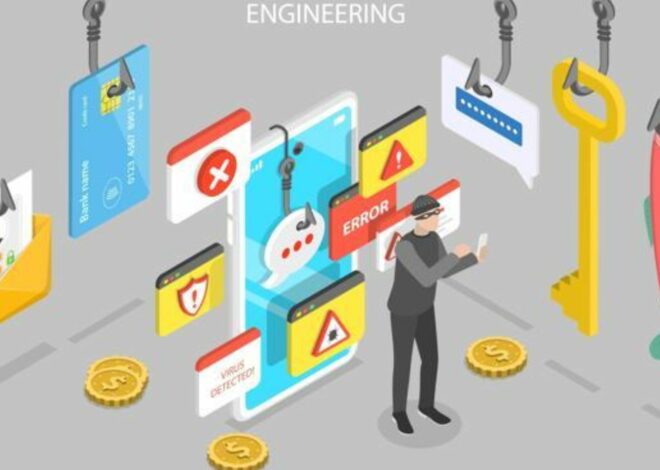The Human Factor in Ransomware Attacks
Ransomware attacks have become a relentless menace in our digital age. They prey on vulnerabilities within organizations, often exploiting the most unpredictable and challenging variable in the cybersecurity equation: humans. In this blog post, we’ll embark on a journey to uncover the multifaceted role of the human element in ransomware attacks. From unwittingly clicking on malicious links to the critical importance of user education, we’ll explore how human actions and behaviors can either thwart or enable ransomware attacks.

The Click That Unleashes Chaos
One of the most common entry points for ransomware attacks is through deceptive email attachments or links. The power to initiate these attacks often lies in a single click—the moment when an unsuspecting employee opens an attachment or clicks on a link that appears harmless. Attackers leverage psychology, manipulation, and social engineering to craft convincing messages, preying on curiosity or urgency.
The human element in ransomware attacks starts with the employee who clicks without a second thought. Cybercriminals count on this momentary lapse in judgment, capitalizing on the natural human tendency to trust and respond to communication, especially if it appears to come from a legitimate source.
Social Engineering
Social engineering is the art of manipulating individuals into divulging confidential information or taking certain actions. It’s a cornerstone of ransomware attacks, as cybercriminals often use psychological tricks to convince victims to cooperate willingly. Attackers might pose as coworkers, IT personnel, or even trusted vendors to deceive employees.
The human element in ransomware attacks is evident when individuals let their guard down due to the perceived legitimacy of the communication. Training employees to recognize social engineering tactics is crucial in building a strong defense against such attacks. Additionally, creating a culture of skepticism and vigilance can help mitigate the risks associated with social engineering.
Insider Threat
Sometimes, the human element in ransomware attacks doesn’t come from external actors but from within an organization itself. Insider threats, whether intentional or accidental, can be a potent force in facilitating ransomware incidents. Disgruntled employees, careless workers, or those who lack cybersecurity awareness can inadvertently or intentionally assist attackers in compromising the organization’s security.
Preventing insider threats requires a combination of robust access controls, continuous monitoring, and employee education. Establishing clear policies and procedures for handling sensitive data can help minimize the risk of insider collusion with cyber criminals.
Ransomware and the Remote Work Revolution
The COVID-19 pandemic ushered in an era of remote work, bringing both convenience and new challenges. With employees working from various locations and using personal devices, the attack surface for ransomware has expanded dramatically. The human element in ransomware attacks now includes the unique vulnerabilities associated with remote work.
Employees may unknowingly expose their organizations to risk by using unsecured networks or devices, falling victim to phishing attacks, or mishandling sensitive data outside the traditional office environment. Organizations must adapt their cybersecurity strategies to address these evolving challenges while balancing the need for flexibility and productivity.
The Cost of Human Error
In the high-stakes world of ransomware, even a simple human error can have devastating consequences. Accidental data leaks can provide attackers with valuable information, making it easier for them to launch targeted attacks. These leaks can occur through misconfigured cloud storage, improperly addressed emails or unintentional file sharing.
To reduce the risk of accidental data leaks, organizations must invest in robust data loss prevention (DLP) solutions, offer comprehensive training to employees and implement strict access controls to ensure that sensitive data is only accessible by authorized personnel.
Education as a Shield
In the battle against ransomware, knowledge is a potent weapon. Educating employees about the human element in ransomware attacks and the tactics used by cybercriminals is essential. This education should extend beyond basic cybersecurity awareness to include practical training on recognizing phishing attempts, secure online behavior, and incident reporting.
Regular, engaging, and up-to-date training programs can empower employees to become the first line of defense against ransomware attacks. When employees are vigilant, informed, and proactive, they are less likely to inadvertently aid cybercriminals.
The Psychology of Ransomware Victims
Understanding the psychology of ransomware victims sheds light on why some individuals and organizations choose to pay for ransomware. Victims often grapple with a difficult decision: pay the ransom and potentially regain access to their data or refuse to negotiate with cybercriminals, risking the loss of critical information.
The human element in ransomware attacks also involves the emotions and stress that victims experience. The fear of data loss, reputational damage, and operational disruption can lead to hasty decisions. Organizations must have well-defined incident response plans and crisis management strategies in place to help victims make informed choices in the heat of the moment.
Beyond the Click: Post-Infection Response
When a ransomware attack occurs, the human element is still very much in play during the response phase. Decisions made by incident response teams, communication with attackers, and the cooperation of affected employees all impact the outcome. Organizations need to have a clear and well-practiced incident response plan to minimize damage and increase the chances of successful recovery.
The involvement of law enforcement agencies, legal experts, and cybersecurity professionals in post-infection response highlights the collaborative nature of dealing with ransomware attacks. Cooperation and communication among these parties are vital to achieving the best possible outcome.
Conclusion
In the ever-evolving landscape of ransomware attacks, the human element remains both the weakest link and the greatest source of strength. By understanding the psychology, behaviors, and vulnerabilities of employees, organizations can better prepare themselves to defend against ransomware attacks. It’s a battle that requires continuous education, technological innovation, and a commitment to fostering a cybersecurity-conscious culture.
As we navigate the digital age, the human element in ransomware attacks will continue to evolve. However, with proactive measures and a vigilant workforce, we can tilt the odds in favor of cybersecurity resilience.


